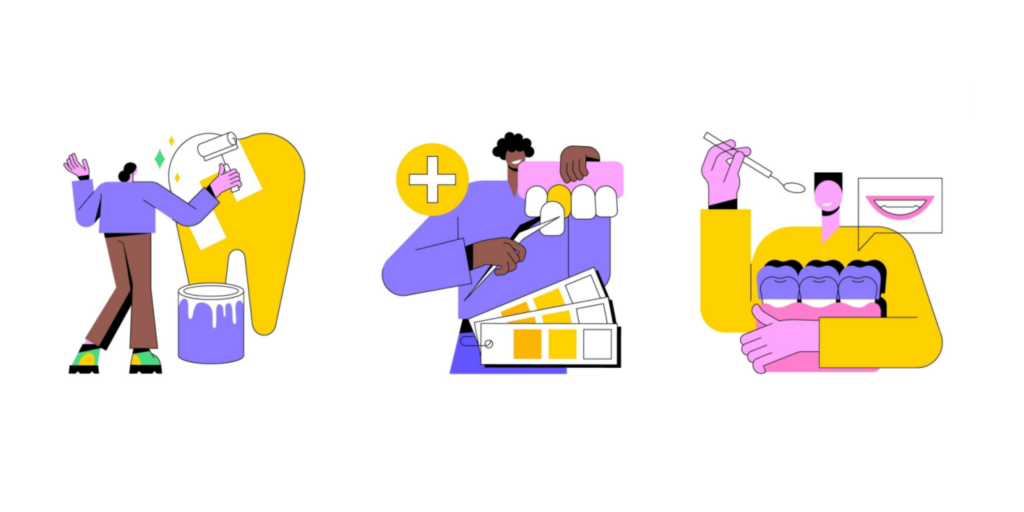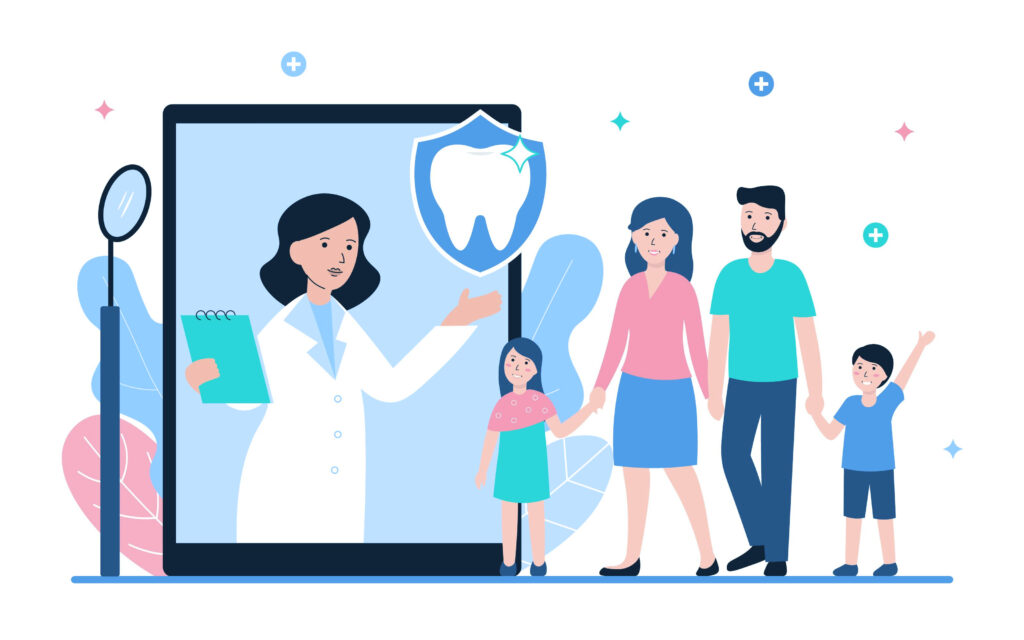Last updated on January 26th, 2021 at 12:21 pm
 Are we there yet?
Are we there yet?
I began asking myself this question about two articles ago! And if you’ve been following along with my posts, you may have been asking the same thing.
The answer: yes! This post (Part VIII) is the final installment in this eight-part series about how to fix new patient problems. You can find these earlier issues here: Part I, Part II, Part III, Part IV, Part V, Part VI and Part VII.
To recap, if you’ve read any of the past issues, you know that I’ve covered how to solve the three most common new patient related issues I’ve encountered with dentists.These issues or “scenarios” as I’ve called them are:
Scenario 1: Your practice has never consistently attracted an adequate number of new patients.
Scenario 2: Your office used to get more new patients and they’ve dropped off – suddenly or over time.
Scenario 3: You’re getting a good number of new patients, but you’re not seeing the expected results in your collections or bottom line.
Scenario’s 1 & 2 have been covered (at length) in parts I through VI. In part VII, I began covering how to solve Scenario 3: “You’re getting a good number of new patients, but you’re not seeing the expected results in your collections or bottom line.”
Specifically, I found that Scenario 3, which in essence is: high/adequate new patients but inadequate collections, usually relates back to one or more of four issues. These issues are:
- Customer service is poor.
- You have no established pattern to “sell” treatment plans to new patients
- You need to improve your ability to present treatment.
- Your schedule is overloaded.
Part VII covered points “1” and “2” above. In this final installment, we’ll cover “3” and “4” above.
And with that, let’s jump in!
3. You need to improve your ability to present treatment.
 Outside of clinical skill, the skill that occupies the closest relationship with your potential financial success is: treatment presentation ability.
Outside of clinical skill, the skill that occupies the closest relationship with your potential financial success is: treatment presentation ability.
In a perfect world, clinical excellence would march in a direct ratio with financial success. Unfortunately, as we all know, it doesn’t. For that matter, I’ve met a number of excellent clinicians with practices that would rate as mediocre (or worse) from a financial or profitability standpoint.
The ability to connect with a patient and get them to really understand what is going on is not just a good idea – it’s a virtual requirement if you want to ensure a successful office.
Why? Well, a patient who “gets it,” with regards needed treatment will normally proceed with that treatment. It’s not always a cost thing as we have imagined.
A majority of patients accepting full treatment plans (regardless of insurance coverage) is about as close to a “win-win” scenario as you can get. Think about it:
- The patient gets the treatment they truly need – they are healthier,
- Your office collects more, leading to more profitability,
- You get to do the dentistry you love doing and do it more efficiently – i.e. quadrant dentistry versus one tooth at a time.
And all of this comes back, really, to your ability to present treatment. Sure, it would be great if you could “outsource” this to other staff. But, something we’ve found and really proven over the years is no one in the office can potentially present treatment more effectively than the doctor. The doctor, with the proper knowledge, will uniformly have the highest acceptance rate.
How do you know if this is a problem in your office? Well, let me start with a few questions.
- Are you completely comfortable discussing a treatment plan of any size with a new patient?
- Are you willing to follow up the treatment discussion with a basic outline of your fee and how they can pay? (Again while being completely comfortable)?
- Could you present a treatment plan from start to finish, including taking payment – all by yourself? (Not that you would ever have to do every step…but could you competently pull that off)?
- Do at least 70% of your patients accept FULL treatment plans – not phased care but FULL plans – including paying for them?
- Do you ever present partial treatment plans – or present treatment in stages because you’re afraid of what a patient might think – as opposed to valid clinical concerns?
If you answered “no” to 1-4 above or “yes” to 5, you have an issue with relation to treatment presentations.
The only question is how important is it to you to get it fixed? If things are tooling along moderately well, you may find that you lack motivation to take action – despite the fact that proper training could create exponential growth in your office. If things are not going so well, you may find all the motivation to take action you need in that simple fact.
In any event, the handling for this is simple: you need to get trained on HOW TO PROPERLY (AND EFFECTIVELY) PRESENT TREATMENT.
There’s no quick “hint” or tip I could give you that will solve this problem. You need the proper tools and you need to learn how to use them. My suggestion: do the MGE Communication and Sales Seminars. The results from these seminars are so uniformly fantastic that people have a hard time believing them! Find out more for yourself. Call us at (800) 640-1140 for more information.
And with that, let’s hit the last issue:
4. Your schedule is overloaded.
 Your (the doctor’s) schedule being overloaded affects many areas of the practice. Not least of which is collections and productivity. It’s actually in a way a specialized form of customer service problem.
Your (the doctor’s) schedule being overloaded affects many areas of the practice. Not least of which is collections and productivity. It’s actually in a way a specialized form of customer service problem.
Let’s say you have a great staff, accounts are straight, and the office is clean and that you have no problems with treatment acceptance. For that matter, your last patient (a new one) just accepted a $7,000 treatment plan. All sounds good right? Here’s the problem: the first opening on the schedule for this patient who just agreed to a $7,000 treatment plan is THREE WEEKS FROM NOW.
This presents a number of problems.
- With this happening on your schedule, you’ve pretty much destroyed any reason for a patient to pre-pay for treatment – why pre-pay for something they are not getting for three weeks?
- You are again, with a new patient, asking for inordinate loyalty – you’ve just met them and you’re making them wait three weeks for something that they potentially could get done sooner elsewhere.
- It’s just not good customer service to make someone wait that long due to no fault of their own (i.e. they’re waiting because of you – not them).
If any version of this is happening to you, you must immediately find out WHY people have to wait. Maybe you need to sort out HOW you schedule – i.e. increase efficiency. Maybe you need to add an assistant – or if you’re doing your own hygiene, add a hygienist.
Maybe you are scheduled efficiently and you’re still overloaded, in which case you may need an associate.
In any event, it’s critical to determine WHY this is happening and HOW you need to fix it. And then FIX IT! It’s not hard if you’re willing to take a brutally honest look at the situation.
Summary
And with that, we have come to the end! We covered a lot of ground didn’t we?
For those of you that have been with me through these eight issues (and any newcomers), I extend a sincere thanks to you for your patience and all of your feedback. From what I have heard, it seems to have been helpful and I hope it has been for all who have read it.
If you have any questions about any of these newsletters, please feel free to email me at sabrib@mgeonline.com or call me at (800) 640-1140. I would love to hear from you.
I wish you the best!



No Comments
Be the first to start a conversation